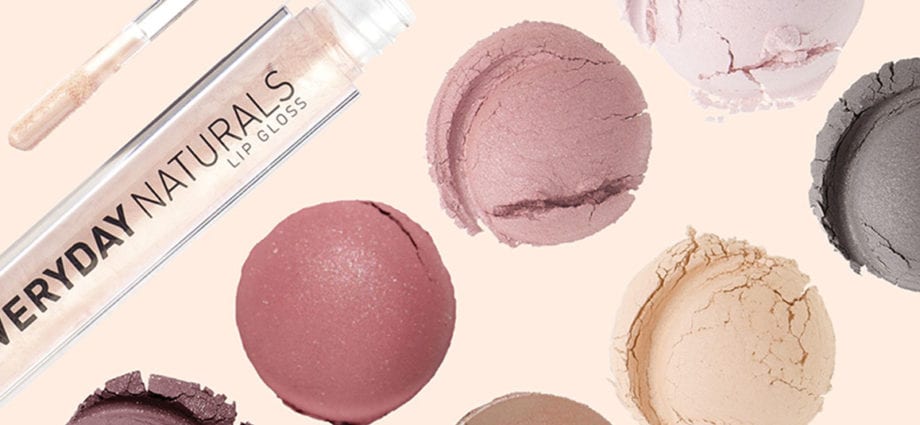Hollywood stars were the first to notice mineral makeup. And not because wearing diamond dust on your faces is more glamorous than silicone. But because minerals do not harm the skin, like ordinary makeup, which professional actors are forced to wear for days. They do not contain fragrances, preservatives, viscosity-increasing agents and other synthetics. Powders are packaged in tiny, 5 to 30 grams, jars. Such beauty should be applied to the face with the help of special brushes, ordinary sponges are not suitable here.
Why do we love her
About 10 years ago, the passion for mineral cosmetics reached ordinary eco-people who respect it for the fact that minerals:
1.Very rarely cause allergies;
2. Remove oily sheen;
3. Mask fine wrinkles;
4.Work as antiseptics;
5. Soothe irritated skin;
6. Even out the color and relief of the face, hiding minor imperfections such as acne marks;
7.Good on the skin throughout the day.
Initially, cosmetics, positioned by manufacturers as mineral, contained a limited number of ingredients (on average about five) and were completely natural. The idea, as usual, was distorted over time, and now in many “mineral” cosmetics these same minerals are sometimes no more than 10%.
This is explained, firstly, by the fact that the natural palette contains a very limited number of colors (while synthetic additives significantly increase the number of color options). Secondly, it is more difficult to apply minerals to the skin than conventional products – it takes both skill and time. Thirdly, this addition of synthetics reduces the cost of cosmetics. To have an idea of what exactly the manufacturer put in the coveted jar, carefully study the label. Everything is written there.
Our heroes
The list of ingredients in mineral cosmetics is extensive. They are crushed and mixed in different proportions. More often than others they use:
Aluminosilicates – the main ingredient of mineral cosmetics, its base. They replace talcum powder used in traditional decorating.
Titanium dioxide and zinc oxide – effective UV filters. In addition to ultraviolet light, they retain moisture in the skin and, moreover, work as effective antiseptics.
Boron nitride – prevents mineral dust from falling off the skin. Not gum, but sticks it to your face.
Iron oxide, chromium oxide, carbons, ocher etc. – natural pigments.
Precious and semi-precious stones, metals – amethyst, citrine, tourmaline, aquamarine, malachite, hematite, diamond chips, powders of gold and silver. Each has its own characteristics. Silver, for example, has a bactericidal effect, diamond dust turns every girl into a worthy match for Edward Cullen, and malachite and hematite improve the blood supply to the skin and even out the complexion.
Quartz or silica – absorb sebum (sebum), removing greasy shine from the nose and cheeks.
But what should not be in cosmetics that claim to be mineral:
Artificial dyes and preservatives – first of all, parabens;
Bismuth oxychloride… It is often used – it improves the texture of cosmetics, protects the skin from the sun, gives it a pearlescent hue. But, alas, not everyone will taste these bonuses – it is also a strong allergen.
Talc… Honest, natural – but, alas, considered a carcinogen.
Mineral oils… They clog pores and dry out the skin.
Lanolin (fat from sheep’s wool). It is not always properly cleaned and is overloaded with chemicals in its original state.
To whom minerals?
Mineral cosmetics are especially suitable for owners of oily and porous skin, which is successfully matted and dried. A couple of brush strokes – and you can forget about the problem T-zone until the end of the day.
With dry skin, mineral products should be used with caution, only from time to time, otherwise you will completely dry it out. For those whose complexion is dull and gray, mineral powder will help to “shine” – you just need to choose the one with diamond dust and semi-precious stones.
How to use mineral makeup. 4 rules
1. First moisturize your skin… Any moisturizer or makeup base will work.
2.Do not overdo it… Use minerals to a minimum. They are literally erased into powder, the particles of which are very small and therefore fit very tightly on the face.
3. Be be careful with mineral blush… Natural pigments look brighter on the skin than in a jar. If you miss, you can easily turn into Parsley, although in general, mineral makeup looks more natural on the face than traditional makeup.
4.Use special brushes for application – preferably from natural hair. However, if you are allergic to it, you can do with a synthetic brush.










